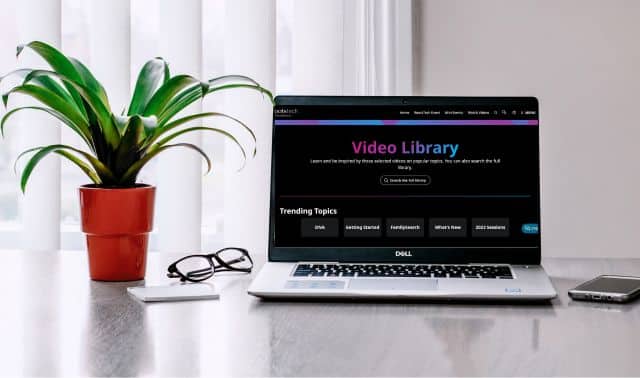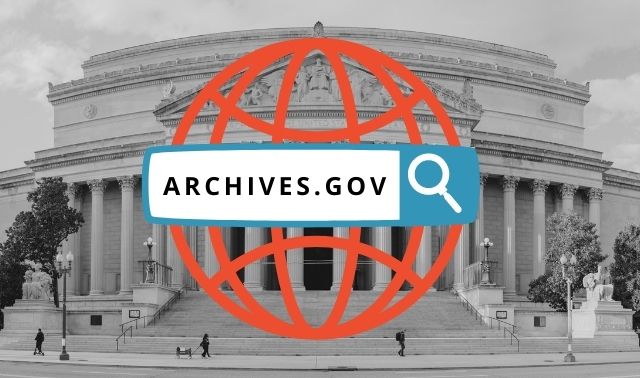Sign up for the Family Tree Newsletter Plus, you’ll receive our 10 Essential Genealogy Research Forms PDF as a special thank you!
Get Your Free Genealogy Forms
"*" indicates required fields
Imagine a place where you could spend a few hours perusing microfilm of original genealogical records from archives around the world. Where you get free access to several online subscription databases and friendly, knowledgeable staff are available to assist you.
Too good to be true? Not at all. Such a genealogy paradise is quite possibly in your very own neighborhood. Welcome to your local Family History Center.
What’s an FHC?
Family History Centers (FHCs) are satellite branches of the largest genealogy library in the world: the Family History Library (FHL) in Salt Lake City. More than 4,500 FHCs dot nearly 100 countries. Almost all are located in meetinghouses of the Church of Jesus Christ of Latter-day Saints (LDS Church), but all are open to anyone. In fact, about half of FHC patrons aren’t members of the LDS church. FHCs exist entirely to assist patrons with genealogical research; proselytizing is never allowed.
Although FHCs share the same purpose, you’ll find each center you visit to be fairly unique. Some are no more than a small room with one computer and one microfilm or microfiche reader. Other FHCs may have several computers and numerous microfiche and microfilm readers, with file cabinets full of local records on film and fiche. They may also have shelves full of genealogical reference books and extensive collections of data CDs. Many centers now also have digital imaging systems so you can save microfilmed or microfiched images right to a computer.
If you’re fortunate enough to live near one of the few larger, “multi-stake” FHCs, you could find up to 200 computers for patrons and resources not found at the average Family History Center, including access to Ancestry.com . These “super centers” are in Mesa, Ariz.; Los Angeles, San Diego, Oakland and Sacramento, Calif.; Idaho Falls and Pocatello, Idaho; Las Vegas; Logan, St. George and Riverton, Utah; and Hyde Park, London.
Getting ready
To find an FHC near you, go to the FamilySearch beta website and enter your ZIP code or your city and state. Or you can download Family Tree Magazine‘s PDF list of FHCs in North America.
You’ll see each center’s addresses, phone number and hours of operation. The volunteers who staff FHCs set the hours and may change them, so it’s a good idea to call ahead and verify hours before your visit. At the same time, you might ask what resources are available at the center. This will help you plan how you can spend your time there. If you want to use microfilm, ask if the center has a digital imaging system for saving record images. You also can inquire whether anyone on the staff specializes in the country or topic you’re researching. Many FHC volunteers have been doing genealogical research for decades and are happy to share their knowledge with you.
No internet access at home? Just look in your local phone directory under Church of Jesus Christ of Latter-day Saints. If the listing doesn’t mention an FHC, call the number and request to be directed to the nearest FHC.
The main feature that sets an FHC apart from any other genealogical library is your ability to request and rent microfilm and microfiche from the FHL’s massive collection of records from around the world.
FamilySearch began microfilming records as early as 1938, and today that collection contains 2.4 million-plus rolls of microfilmed genealogical records from more than 110 countries. These records include civil registration; court, land and tax records; as well as parish registers of recorded births, marriages and deaths that often go back into the 1500s. You can research generations of your ancestors around the world without ever leaving town.
Search the FHL catalog from home by going to the FamilySearch website, looking under the Library tab at the top and choosing Library Catalog. You’ll get several search options, but using the Place option gives you the best overview of records available for a specific location. After you type in a place and click Search, you may get a few similarly named location options. Choosing one of those will show your results grouped by topics, such as Biography, Cemeteries, Census, Church Records, Court Records and many more. Click a topic to see all the related titles; click a title to learn more about that item. Once you narrow the results to a promising microfilm, click Film Notes in the upper right. Then choose the “printable version” from the bottom of the page and print a copy to take with you to the FHC. (If you’ve clicked on a book title, note that FHL books don’t circulate to FHCs. You can look for the book at your public library or ask the librarian to help you borrow it through interlibrary loan.)
Once you’ve printed records for the film and/or fiche you want to request, you’re ready to visit an FHC. If you plan to do any research using the on-site computers or other resources, remember to bring your genealogy charts, notes and information on the line you’ll be looking up.
Your first visit
Your local FHC will probably be in an LDS church building. If you don’t see a “Family History Center” sign, drive around to the back. Although access varies by location, many centers have a separate door, rather than using the main entrance. You may need to use an intercom system to be “buzzed” in.
Chances are good one of the friendly volunteer staff will greet you and ask you to sign in with your name and perhaps a few other bits of information. This is used only for statistical purposes, to determine the amount and type of usage. If your phone number is requested, it is only to call you if you leave something behind — otherwise, nobody will contact you unless you specifically make that request.
If this is your first visit, take a few minutes to look around. Ask a staff member to give you a brief tour and show you what resources are available for patrons. Many centers have at least a few shelves with genealogy books and reference material. Collections of this type are unique to each center and mostly donated. You never know what you may find.
Most centers also have file cabinets of microfilm and microfiche on indefinite loan. Ask whether the center has a name index for the films in its collection. Though the collection varies from center to center, a microfiche series you’ll find in most FHCs is the Scotland Old Parochial Registers Index. This set of more than 1,000 fiche indexes more than 10 million names in Church of Scotland parish registers, dating from the late 1500s through 1854.
Also in most FHCs is the Accelerated Indexing System (AIS) microfilm, which indexes people living in the United States from 1607 to 1906. The information is compiled from census records and other sources, and can direct you to original records with more information.
You will definitely want to spend some time on the FHC computers. They’ll give you free access to several subscription websites through the FHL’s “portal” site, including:
- 19th Century British Library Newspapers: more than 2 million digitized newspaper pages, all fully text searchable
- FamilyLink.com: a family tree collaboration site
- FindMyPast.co.uk: a subscription site of UK vital records, censuses and outbound passenger lists
- Footnote: historical documents from the National Archives, Library of Congress and other repositories
- The Genealogist: subscription website for UK records
- Genline: subscription website offering Swedish records
- Godfrey Memorial Library: resources including the Newspaper Archive service, genealogies and more
- HeritageQuest Online: censuses, historical books, the Periodical Resource Index, Revolutionary War Pension applications, Freedman’s Bank Records and more
- Historic MapWorks Library Edition: ProQuest’s collection of nearly 1 million digitized historical maps
- World Vital Records: Subscription website with thousands of genealogical databases
- The American Civil War: Civil War letters, diaries, photographs and more from Alexander Street Press
Requesting microfilm
Now for those FHL catalog printouts you brought along. The staff volunteers will help you fill out the simple film request form (which may require determining which one reel of a film series you should request) with the film number, description, and your contact information. Be sure to ask how you’ll be notified your film is in — most FHCs will call, e-mail or send a postcard.
You’ll pay a rental fee of $5.50 per microfilm roll (some FHCs may add a small handling fee to cover the expense of notifying you when your film is in); bring cash in case that’s all the center can accept. The best deal going, however, is microfiche, which costs only 15 cents per sheet, and once ordered, remains in that FHC indefinitely. In the FHL catalog, you can tell whether an item is microfiche by its description or its film number, which will begin with the number 6. To limit your search to only microfiche, use the catalog’s Keyword search with the word “fiche” as one of your keywords.
In one to several weeks, you’ll get word that your film or fiche has arrived at the FHC. It’ll remain in the FHC’s temporary collection for about four weeks. You’ll need to return to the center within that time frame to view it on a microfilm reader (you can’t take the film outside the FHC). If necessary, you can renew microfilms for the same fee of $5.50 per film. Films that are renewed a second time become part of the FHC’s permanent collection instead of being returned to the FHL.
If the FHC has a digital imaging system you plan to use, bring a CD or flash drive to save record images. Otherwise, you’ll reimburse staff for printouts from your film reader or use change (be sure to bring some).
Don’t feel bad if you’re inexperienced in using microfilm or fiche readers; just request a lesson from the staff. Remember, the volunteers are there to help you with anything from searching the FHL catalog to loading reels of film. Many will lend their genealogical expertise where they can. With all of their resources, FHCs are easily one of the best-kept secrets in the genealogy world.
TIP: FamilySearch is updating its website and the FHL’s online catalog with more user-friendly features. Stay up-to-date on the changes at the Insider blog.
MORE ONLINE
Free Web Content
For Plus Members
Family Tree Shop
From the January 2011 issue of Family Tree Magazine
More great genealogy resources from Family Tree Magazine:
ADVERTISEMENT




